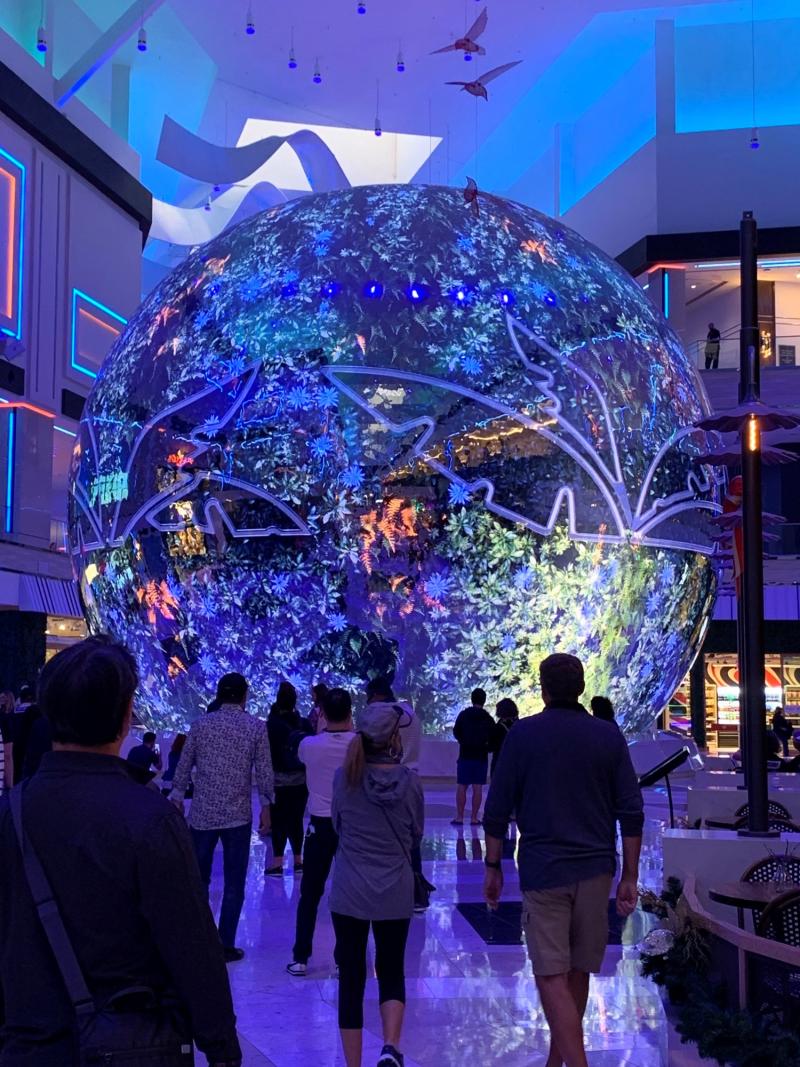Restaurants and bars – especially sports bars – have used TVs for decades to attract and entertain customers. With the introduction of flat screen TVs and monitors 20+ years ago, bar and restaurant owners started to realize these screens could be used for more than just showing sports and could replace traditional static signage for a variety of purposes, such as digital menu boards or to promote the latest special.
Back then, plasma screens were bulky and expensive. Fast-forward to today, and digital screens are affordable, lightweight, thin and increasingly come with 4K resolution. Digital signage isn’t limited to LCD screens, however, but includes LED and projectors as well as transparent and holographic-looking varieties.
As with any technology, it’s easy to gravitate toward something just because it’s cool, but as a business owner or manager, you need to have legitimate business use cases for what you are trying to achieve. Typically, this falls under two broad categories: solving a problem or creating an opportunity.
The main benefits venue owners find in using digital signage is its ability to show dynamic content while being able to monitor and update that content across multiple screens and locations, all from the cloud.
Here are some of the reasons bars and restaurants are using digital signage today:
- To promote limited time offers and high-profit-margin items
- To entertain customers while they wait – not limited to sports and news programming, but also viral videos, music videos and more
- To inform customers about certain products, pricing and how to order
- To create an immersive environment (see Illuminarium as an example)
- To capture the attention of people as they are walking or driving by with window/street-facing signage
- To elevate the brand
- To monetize with advertising or sponsorship
- To display digital art and create a desired ambiance, whether it’s relaxing or exciting
The Rise of Self-Service Ordering Kiosks
Like digital signage, self-service kiosks came to the fore about 20 years ago with self-check-in kiosks at the airport and self-checkout kiosks at the grocery store. Now you see self-service ordering kiosks at major quick-service restaurants, which generally mean an all-in-one unit with a touchscreen, printer and payment terminal. However, it can also be as basic as a mounted tablet.
At the onset of COVID, it seemed touchscreens were doomed, but it’s now been proven that COVID exposure from a touchscreen is unlikely since COVID is mostly passed via airborne particles. In fact, kiosks helped provide physical distance from staff when ordering during the pandemic. And now that there is a labor shortage, kiosks can help alleviate the bottleneck at the point of sale and enable restaurants and bars to have staff focus on fulfilling orders.
From Basic to Futuristic
Most bars and restaurants use digital signage at a basic level – to inform guests what’s on the menu – and that’s okay, because updating static signage every time you change the price or add/drop a menu item is tedious, costly and time-consuming.
But if you want to see in-store digital experiences pushed to the limits, one only need to take a trip out to Las Vegas. With tourism the number-one driver of that economy, there is a healthy competition to capture visitors’ attention and draw them into casinos, hotels, restaurants, nightclubs and experiences.
Zouk Nightclub, located in Resorts World Las Vegas, not only has the moving lights and thumping music one would expect but also digital screens on the walls and ceiling to create an electric atmosphere.
The X Pot restaurant at The Palazzo features food and drinks served by robots, video projections on the walls and even on diners’ plates in its Spectrum Dining Room.
Attend Digital Signage Experience, Nov. 17-19 in Las Vegas
The top event to learn about the latest in digital signage is Digital Signage Experience (DSE), taking place Nov. 17-19 at the Las Vegas Convention Center. There’s also a digital signage installation tour planned for Nov. 16, the day before the trade show, to the following venues:
- Fremont Street Experience (LED canopy)
- Circa Resort (world's largest sportsbook)
- The LINQ Hotel + Experience (Refik Anadol installation)
- Resorts World (LED facade and giant sphere)

During the show, there are several sessions aimed at helping bar and restaurant owners use digital signage to elevate the experience, such as:
- Digital Signage 101: What to Know, Where to Begin
- Digital Menu Boards: The Value Proposition for Brands and Customers
- Restaurant Roundup – Today’s Winning Trends, Technologies and Tactics
To learn more about the DSE show, visit DigitalSignageExperience.com.
To obtain a free exhibit hall pass, use the code BNR22.
David Drain is the Digital Signage Experience (DSE) director of event programs at Questex. He has been involved in the digital signage industry since 2007 when he co-founded the Digital Signage Association. He also served as executive director for the Self-Service & Kiosk Association and the Interactive Customer Experience (ICX) Association.
Plan to Attend or Participate in
Bar & Restaurant Expo, March 27-29, 2023
To learn about the latest trends, issues and hot topics, and to experience and taste the best products within the bar, restaurant and hospitality industry, plan to attend Bar & Restaurant Expo, March 27-29, 2023 in Las Vegas. Visit BarandRestaurantExpo.com.
To book your sponsorship or exhibit space at Bar & Restaurant Expo, contact:
Veronica Gonnello
(for companies A to G)
e: [email protected]
p: 212-895-8244
Tim Schultz
(for companies H to Q)
e: [email protected]
p: (917) 258-8589
Fadi Alsayegh
(for companies R to Z)
e: [email protected]
p: 917-258-5174
Also, be sure to follow Bar & Restaurant on Facebook and Instagram for all the latest industry news and trends.
